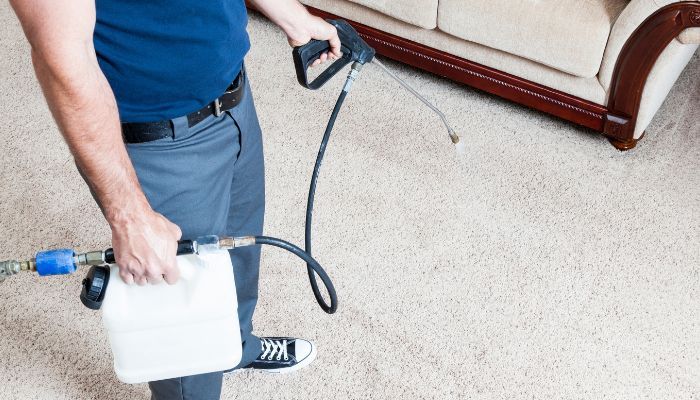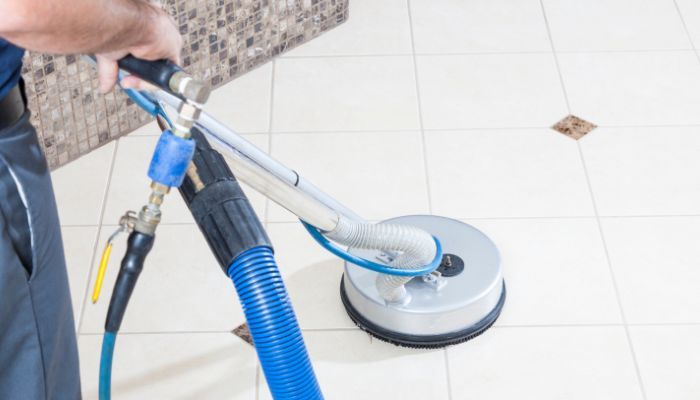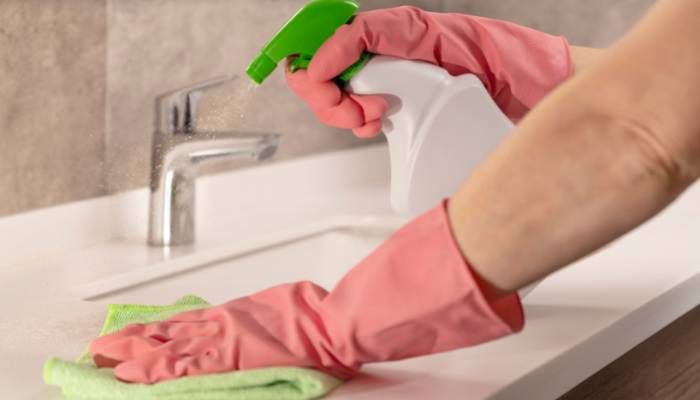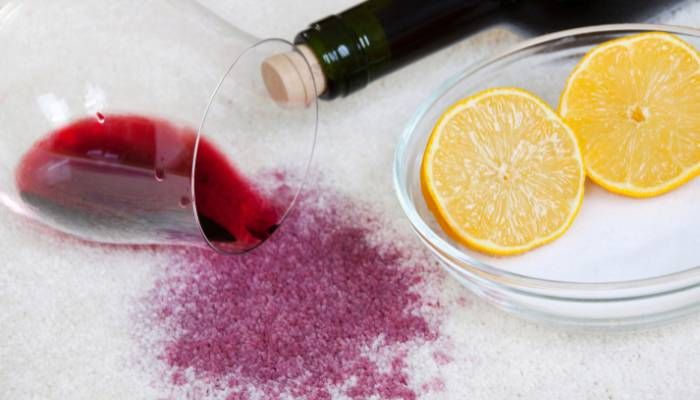We’ve all seen the commercials and advertisements touting the benefits of DIY carpet cleaning. But what they don’t tell you is that DIY carpet cleaning can be a dangerous proposition. In this article, I’ll explain the risks associated with DIY carpet cleaning and why you should trust professional carpet cleaners instead.
Have you ever considered the dangers of DIY carpet cleaning? Sure, it seems simple enough – just mix up some detergent and water and get to scrubbing! But the reality is much more complicated. From harsh chemicals to inefficient cleaning methods, there are a lot of risks associated with DIY carpet cleaning.
In this article, I’ll examine the risks of DIY carpet cleaning and explain why it’s best to leave it to the professionals. From potential health risks to potential damage to your carpets, I’ll cover everything you need to know about the dangers of DIY carpet cleaning.
Common Carpet Cleaning Mistakes
When it comes to carpet cleaning, the dangers of DIY can be much greater than you think. While the promise of a sparkling clean home can be tempting, missteps can lead to costly and irreversible damage. To avoid making common mistakes that can lead to long-term damage, it’s important to familiarize yourself with the basics of carpet cleaning.
I’m sure I’m not the only one who has been guilty of scrubbing away at a stain, only to make it worse. This is a classic example of a common carpet cleaning mistake. When it comes to getting rid of a stain, it’s best to start by blotting the affected area with a clean cloth or towel. Scrubbing can cause the stain to spread and set deeper into the carpet fibers, making it harder to remove.
Another mistake people often make is over-shampooing their carpets. Using too much shampoo can leave behind a sticky residue that can cause dirt to accumulate more quickly. It can also make your carpets look dull and lifeless. When it comes to carpet cleaning, a little bit of shampoo goes a long way.
Finally, it’s important to remember to thoroughly rinse the shampoo out of your carpets. If you don’t rinse your carpets properly, the shampoo can leave behind a thick layer of soap residue that can attract dirt and dust. This can make your carpets look dirtier than before you cleaned them.
By avoiding these common carpet cleaning mistakes, you can save yourself the headache of dealing with long-term damage. Now that you know the basics of carpet cleaning, it’s time to move onto the next essential topic: the risks of DIY carpet cleaning.
Health Risks Of Diy Carpet Cleaning
While there are many reasons to think twice before tackling carpet cleaning yourself, one of the most important is the potential health risks. DIY carpet cleaning can expose you to hazardous chemicals, dust, allergens, and bacteria. What’s more, it can also cause long-term damage to your carpets if done incorrectly, leaving them looking worse than before.
I often hear people say that they don’t want to hire a professional carpet cleaner because it’s too expensive or time consuming. But the truth is, not only is professional carpet cleaning less expensive in the long run, but it’s also much safer for your health. Professional cleaners are trained to use the right cleaning products, techniques, and equipment to ensure that your carpets remain safe and hygienic.
This is why it’s so important to consider the need for professional carpet cleaning before you attempt to tackle the job yourself. Without the right equipment and knowledge, you run the risk of exposing yourself and your family to health risks that could be easily avoided. On the other hand, professional carpet cleaners are equipped with the expertise and necessary tools to ensure your carpets are cleaned correctly and safely.
The Need For Professional Carpet Cleaning
It may seem like a great idea to tackle carpet cleaning by yourself, but the risks are simply not worth it. After all, what’s the point of saving a few bucks if you end up causing irreversible damage to your carpets? That’s why it’s essential to leave the job to the professionals.
Speaking from experience, I can tell you that DIY carpet cleaning can be a huge mistake. Not only will it take up a lot of your time and energy, but it’s likely that you’ll end up with a worse result than if you’d just hired a professional in the first place. Trust me, it’s worth the expense.
Of course, you could always try out a few DIY techniques, but you still need to consider the potential damage that could occur. And that’s where things get tricky. Without the right tools, knowledge and experience, you could end up with carpets that are stained, discolored, or worse.
So, if you want to ensure that your carpets get the best possible clean, then professional carpet cleaning is the way to go. With all the right tools and techniques, a professional cleaner can help to restore your carpets to their former glory in no time.
To sum it up, when it comes to carpet cleaning, it’s always best to leave it to the experts. Otherwise, you may end up causing more harm than good.
Next up, let’s take a look at the potential damage that can occur from DIY carpet cleaning.
Potential Damage From Diy Carpet Cleaning
When it comes to DIY carpet cleaning, it’s important to remember that there are potential risks involved. Not only can it be difficult to get your carpets looking their best without the right tools and techniques, but there is also the potential for damage. Here are three key risks to be aware of:
1) Over-washing: Over-washing your carpets can cause them to become discolored, faded, or even matted. This is particularly true if you’re using too much detergent or shampoo.
2) Not removing stains properly: Improperly removing stains can cause them to become set-in and difficult to remove. This is especially true for pet stains, which may require professional cleaning.
3) Damage from using the wrong cleaning tools: Using the wrong cleaning tools can damage your carpets fibers and lead to premature wear and tear. This is why it’s important to use the right tools for the job.
Even with the best of intentions, DIY carpet cleaning can be risky. It’s important to be aware of the potential damage that can occur, and to consider the pros and cons before you decide to take on the task yourself. With that in mind, let’s take a look at the tools and equipment you’ll need for professional carpet cleaning.
Tools And Equipment For Professional Carpet Cleaning
When it comes to carpet cleaning, there are two main paths to take: DIY or professional. Although DIY cleaning may seem appealing, the potential damage it can cause can be extensive and costly. On the other hand, professional carpet cleaning is a safe and reliable way to keep your carpets looking beautiful.
When a professional carpet cleaner comes to your home, they’ll be equipped with the necessary tools and equipment to get the job done right. They’ll have powerful vacuum cleaners that can easily lift out dirt, dust, and pollen; as well as a variety of scrubbing and spot-cleaning tools to get rid of any stubborn stains. Their equipment is designed to get deep into the fibers of your carpets, ensuring that your carpets are not just looking clean, but truly clean.
Professional carpet cleaners are also able to utilize the latest cleaning solutions and techniques. These solutions are tailored to the type of carpet you have in your home, and can help to keep your carpets looking great for years. In addition, professional carpet cleaners are able to use high-powered extraction machines to get rid of any water or cleaning solution that may be left behind, helping to prevent mold growth and other issues.
By enlisting the help of a professional carpet cleaner, you can rest assured knowing that your carpets are in good hands. Moving forward, be sure to research the various tools and equipment they use to ensure that your carpets are getting a thorough and effective clean.
Next step: Professional cleaning solutions and their benefits.
Professional Cleaning Solutions And Their Benefits
When it comes to professional carpet cleaning, the right cleaning solutions are just as important as the right tools and equipment. Professional grade solutions are specially formulated to break down dirt, grease, and other stubborn stains. These powerful products can act like a magical elixir, transforming your dingy carpets into a sparkling clean one in no time.
I like to think of professional grade cleaning solutions like a turbocharged engine – they give your carpet the extra kick it needs to get the job done effectively and safely. Not only that, but they also reduce the amount of physical labor that’s required to get the carpets looking spotless. Plus, with the right product you can rest assured that your carpets will stay clean for longer.
However, this doesn’t mean that any product will do. It’s important to be aware of the dangers of using the wrong cleaning products. From fading the color of your carpets to damaging delicate fibers, these products can do more harm than good. That’s why it’s important to do your research and make sure you’re using the right solution for the job.
Next, let’s take a look at the dangers of using the wrong cleaning products when it comes to DIY carpet cleaning.
Dangers Of Using The Wrong Cleaning Products
Using the wrong cleaning solutions on your carpets can be a recipe for disaster. While some solutions may work well on other surfaces, they may not be safe or suitable for your carpets. Many cleaners contain harsh chemicals that can damage the fibers of the carpet, leading to fading or discoloration. In some cases, these chemicals could even cause irreparable damage, making it impossible to restore your carpets.
In addition to the risk of damage, using the wrong cleaner could also lead to an unpleasant odor. Cleaners that are too harsh can leave behind a chemical smell that can be difficult to get rid of. This is why it’s so important to read the label and look for a solution that’s specifically designed for carpets.
DIY carpet cleaning can also be dangerous if you’re not careful. Many solutions contain bleach, which can irritate the skin, eyes, and lungs. If you’re not sure how to handle the solution, it’s best to leave it to the professionals.
TIP: When choosing a cleaning solution, always read the label and make sure it’s suitable for carpets. This will help to avoid any potential damage or unpleasant odors.
Having a professional clean your carpets is one of the best ways to ensure that your carpets are properly cared for. The benefits of professional carpet cleaning go beyond just a deep clean; it also helps to protect the fibers of the carpet and keep them looking great for years to come.
Benefits Of Professional Carpet Cleaning
Carpet cleaning can be a tricky and time consuming task, but it’s one that should never be overlooked. A professional carpet cleaner can offer numerous benefits that can save you time and energy, as well as help to keep your carpets looking their best.
When you hire a professional carpet cleaner, you can think of it as taking a deep breath of fresh air. It’s like an oasis of relaxation and cleanliness in the midst of a stressful home project. It offers a feeling of satisfaction and accomplishment, knowing that you’re taking the steps necessary to keep your carpets looking beautiful and in good condition.
Professional carpet cleaning also offers a level of convenience that can’t be found with DIY methods. You won’t have to worry about lugging around heavy machinery or trying to figure out the right cleaning products to use. Professional carpet cleaners have the right tools and expertise to get the job done quickly and efficiently.
On top of that, professional carpet cleaning can provide a sense of security knowing that your carpets are being cleaned safely. With the wrong cleaning products, you run the risk of damaging your carpets and even voiding the manufacturer’s warranty. But with a professional cleaner, you can be sure that your carpets are being taken care of with the right solutions and techniques.
So if you’re looking for a way to keep your carpets looking their best, hiring a professional carpet cleaner is the way to go. The benefits are numerous, and you can be sure that your carpets are being cleaned safely and effectively. Now that you understand the benefits of professional carpet cleaning, it’s time to learn how to choose the right professional cleaner.
How To Choose A Professional Carpet Cleaner
Choosing a professional carpet cleaning service can be a daunting task, but it doesn’t have to be. Think of it like picking out a reliable contractor to build your dream home: you want someone who is experienced and trustworthy, and someone who will work with you to ensure that your project is completed safely and efficiently.
When it comes to choosing a professional carpet cleaner, the same principles apply. I like to start by asking for referrals from friends and family. This is a great way to get an honest opinion of the quality of service from a company that has been tried and tested. You can also check online for reviews and ratings, and even contact past customers for their feedback.
Once you’ve narrowed your list of carpet cleaning services, it’s time to make a few phone calls. Ask each company about the type of cleaning solution they use, and what type of equipment they have. Make sure to inquire about their experience and expertise, and don’t be afraid to ask for proof of insurance.
Choosing a professional carpet cleaner doesn’t have to be a chore. Just remember to do your research and to ask the right questions. With a little bit of patience and due diligence, you’ll be sure to find the perfect carpet cleaning service that will keep your carpets looking their best.
Armed with the right knowledge, you’ll be ready to tackle the dangers of DIY carpet cleaning.
Tips For Diy Carpet Cleaning
If you’re considering tackling carpet cleaning on your own, it can be helpful to know some of the tips for DIY carpet cleaning. While it may seem like a great way to save money, it’s important to remember that it can also be dangerous if you don’t take the proper precautions.
First off, you’ll want to make sure that you have the right equipment. Vacuuming regularly is an important step that helps to remove dirt and debris from the carpet. A vacuum with adjustable suction is ideal, as this will help to prevent any damage to the fibers of your carpet. You’ll also want to make sure that you have a deep-cleaning machine on hand for those tougher stains.
Next, you’ll want to choose the right cleaning solutions. You should avoid using harsh chemicals, as they can cause damage to the fibers of your carpet. Instead, opt for a gentle solution made with natural ingredients such as baking soda and vinegar. These ingredients have natural cleaning properties that can help to break down dirt and grime without causing any harm to your carpet.
Finally, be sure to test the cleaning solution on an inconspicuous area of the carpet before using it on the entire surface. This will help to ensure that the solution won’t cause any discoloration or damage to the fiber.
DIY carpet cleaning can seem like a daunting task, but with the right equipment and cleaning solutions, you can get the job done safely and effectively. Just remember to take your time and use the proper precautions, and you’ll be sure to have a clean and spotless carpet in no time.
The Dangers Of DIY Carpet Cleaning
DIY carpet cleaning is a risky endeavor and can have unintended consequences. From damaging the fibers of the carpet to introducing hazardous chemicals, it is often not worth the potential risks.
By hiring a professional carpet cleaner, you can be sure that your carpets are cleaned safely and effectively. Professionals have the right equipment and the experience to do a thorough job and will be able to get rid of any dirt, stains, and odors.
In the end, it is best to trust the experts when it comes to carpet cleaning. Hiring a professional is the best way to ensure that your carpets are kept in the best possible condition and that your family is safe from any potential hazards.
Frequently Asked Questions
What Is The Best Type Of Professional Carpet Cleaner For My Home?
If you’re thinking about DIY-ing your carpet cleaning, then you need to know the dangers of taking on this type of job yourself. While it may seem like a cost-effective option, it can end up costing you more in the long run.
According to a recent survey, more than 75% of people who attempt to clean their carpets themselves end up having to replace them within two years. This is because DIY carpet cleaning can leave behind residues, which can trap dirt and cause long-term damage.
So, what is the best type of professional carpet cleaner for your home? The answer depends on the type of carpet you have. If you have a wool carpet, then you’ll want to look for a professional cleaner that specializes in wool carpets. The same goes for any type of specialty fabric.
You’ll also want to make sure that the professional cleaner you choose uses the right type of cleaning solutions for your type of carpet. A good rule of thumb is to look for a cleaner that is certified by the Carpet and Rug Institute (CRI). This will ensure that they use the correct cleaning solutions and follow the industry-standard cleaning methods.
Finally, make sure that you discuss your needs and expectations with the cleaner before they begin work. This will help to ensure that the job is done correctly, and that you get the most out of the experience.
DIY carpet cleaning may seem like a good idea, but the dangers it can pose are far too great. Investing in a professional carpet cleaner is the best way to ensure that your carpets stay in good condition for years to come. By doing your research and selecting the right cleaner for your needs, you’ll be able to keep your carpets looking great and protect your investment.
How Frequently Should I Get My Carpets Professionally Cleaned?
Have you ever wondered how often you should get your carpets professionally cleaned? With DIY carpet cleaning, it can be tempting to put off professional cleaning for as long as possible. But when it comes to the health of your home, frequency is key.
Did you know that almost 80% of the dust, dirt, and allergens in your home are found in the carpets? That means if you’re not getting your carpets professionally cleaned on a regular basis, you could be exposing yourself and your family to unhealthy levels of dust and dirt.
It’s recommended that you get your carpets professionally cleaned at least once a year. This helps to ensure that all the dirt, dust, and allergens are removed from your carpets, and that your home is a safe and healthy place to be.
If you have kids or pets, then you may want to increase the frequency of your professional cleanings. This is because kids and pets can track in extra dirt and debris, which can quickly build up in your carpets.
To keep your carpets looking great and feeling clean, it’s best to get them professionally cleaned on a regular basis. This will not only help to keep your home looking and feeling its best, but it can also help to reduce the amount of allergens in your home. That way, you can enjoy your carpets without having to worry about health risks.
What Are The Environmental Impacts Of Using Diy Carpet Cleaning Products?
When it comes to DIY carpet cleaning, it’s easy to think that you’re doing your bit for the environment. After all, you’re avoiding the use of professional carpet cleaning equipment and chemicals. However, this isn’t always the case. In fact, many DIY carpet cleaning products can be incredibly damaging to the environment.
The truth is, many of the ingredients used in DIY carpet cleaning products are not only hazardous, but they can also be incredibly damaging to the environment. These chemicals can get into the air and water, and can even enter the food chain. This can lead to a host of environmental problems, from air and water pollution to soil degradation and even wildlife poisoning.
What’s more, many of these chemicals can be incredibly persistent. They don’t break down easily, meaning they can remain in the environment for a long time. This can lead to a buildup that can have a devastating effect on the environment and the creatures that inhabit it.
So, while DIY carpet cleaning products may seem like a great idea at first, the environmental impacts can be much more harmful than you think. Not only are these products potentially hazardous to your health, but they can have devastating effects on the environment. I’d strongly advise against using DIY carpet cleaning products, and instead would suggest that you opt for professional carpet cleaning solutions instead.
What Is The Most Cost-Effective Way To Clean My Carpets?
If you’re looking for the most cost-effective way to clean your carpets, you might be wondering if DIY carpet cleaning products are the answer. While it’s true that these products can be significantly cheaper than professional cleaning services, it’s important to remember that the environmental impacts of DIY products can be just as damaging.
So, what’s the most cost-effective way to clean your carpets? The answer might surprise you. Investing in a quality vacuum cleaner is key. Vacuums with powerful suction and HEPA filtration systems can help to remove dirt and debris from your carpets with ease. Not only will this help to reduce the amount of dirt and dust in your home, but it can also help to extend the life of your carpets and keep them looking their best.
Additionally, vacuuming regularly can help to reduce the amount of dirt and debris that gets trapped in the fibers of your carpets. This will, in turn, reduce the amount of time and effort you have to put in when it comes time to deep clean. Regular vacuuming can also help to keep your carpets looking brighter and fresher for longer.
So, if you’re looking for the most cost-effective way to clean your carpets, the answer is simple: invest in a quality vacuum cleaner and vacuum regularly. This will not only help you save money in the long run, but it will also help to minimize the environmental impacts of DIY carpet cleaning products.
Are There Any Natural Solutions For Cleaning Carpets Safely?
If you’re looking for an alternative to expensive and potentially hazardous DIY carpet cleaning solutions, then you may want to consider using natural solutions. Natural cleaning solutions are great for carpets because they don’t contain any harsh chemicals, which can be harmful to your health and the environment. Here are some of the most popular natural solutions for carpet cleaning:
• Baking soda: Baking soda is great for cleaning carpets because it absorbs odors and helps to remove stains. Simply sprinkle a generous amount of baking soda over the carpet and allow it to sit for several hours before vacuuming it up.
• White vinegar: White vinegar is a powerful natural cleaning agent that can help to remove dirt and odors from carpets. Simply mix equal parts white vinegar and warm water in a spray bottle and spray it over the carpet. Allow it to sit for 15-20 minutes before blotting it with a clean cloth.
• Club soda: Club soda is a great natural solution for removing stains from carpets. Simply pour some club soda over the affected area and use a clean cloth to blot the stain.
• Lemon juice: Lemon juice is a great natural solution for removing tough stains from carpets. It works to break down the stain and can help to leave your carpets looking brighter and cleaner.
• Salt: Salt is a great natural solution for removing dirt and grime from carpets. Simply sprinkle some salt over the carpet and allow it to sit for a few hours before vacuuming it up.
Natural solutions are not only cost-effective, but they’re also much safer to use than harsh chemical cleaners. They can help to keep your carpets clean and looking great without any of the potential health risks associated with chemical cleaners. So, if you’re looking for a safe and cost-effective way to clean your carpets, then natural solutions are definitely worth considering.




